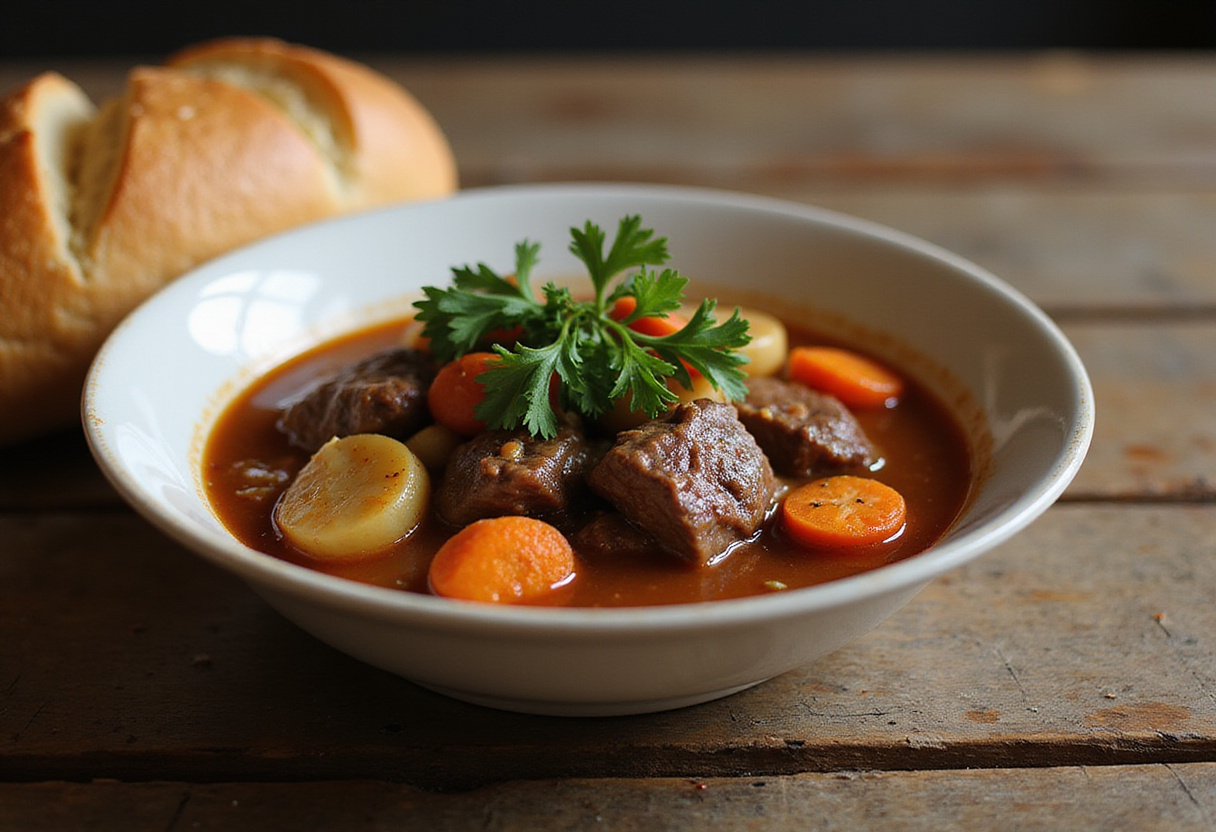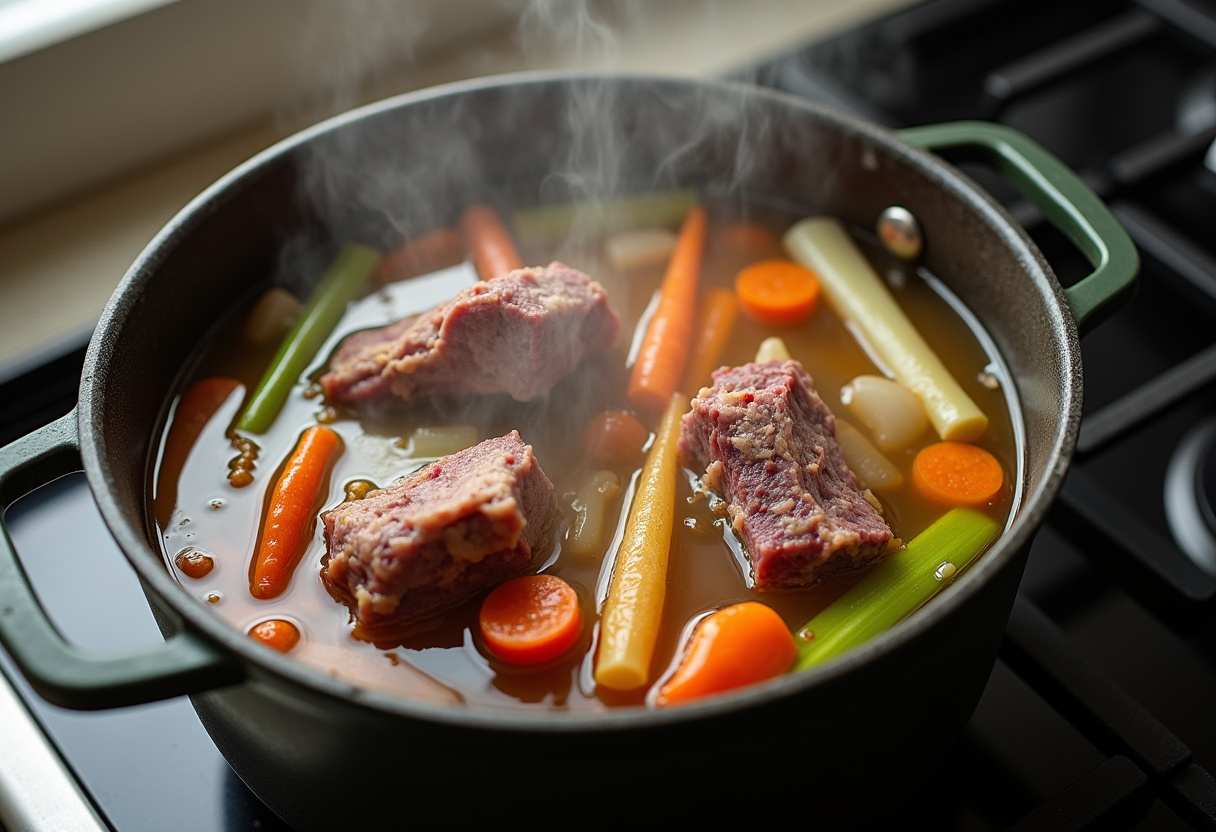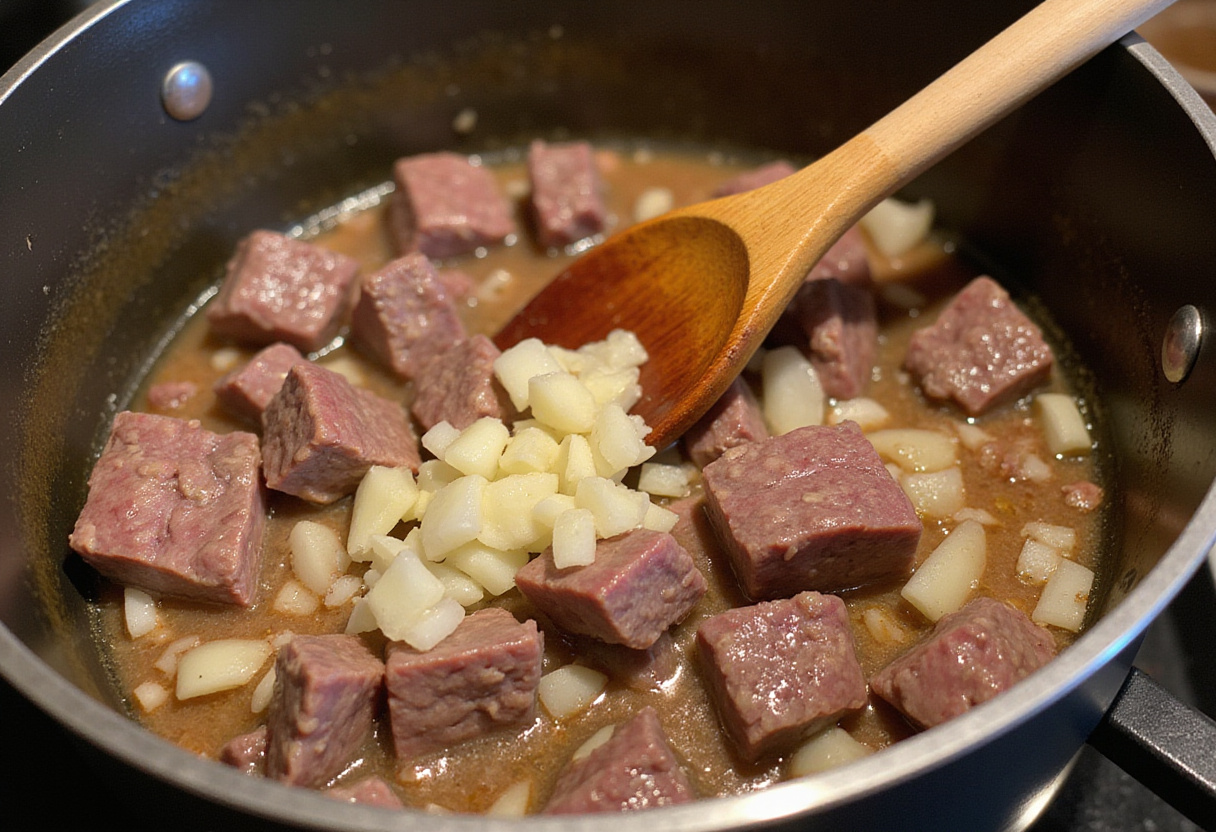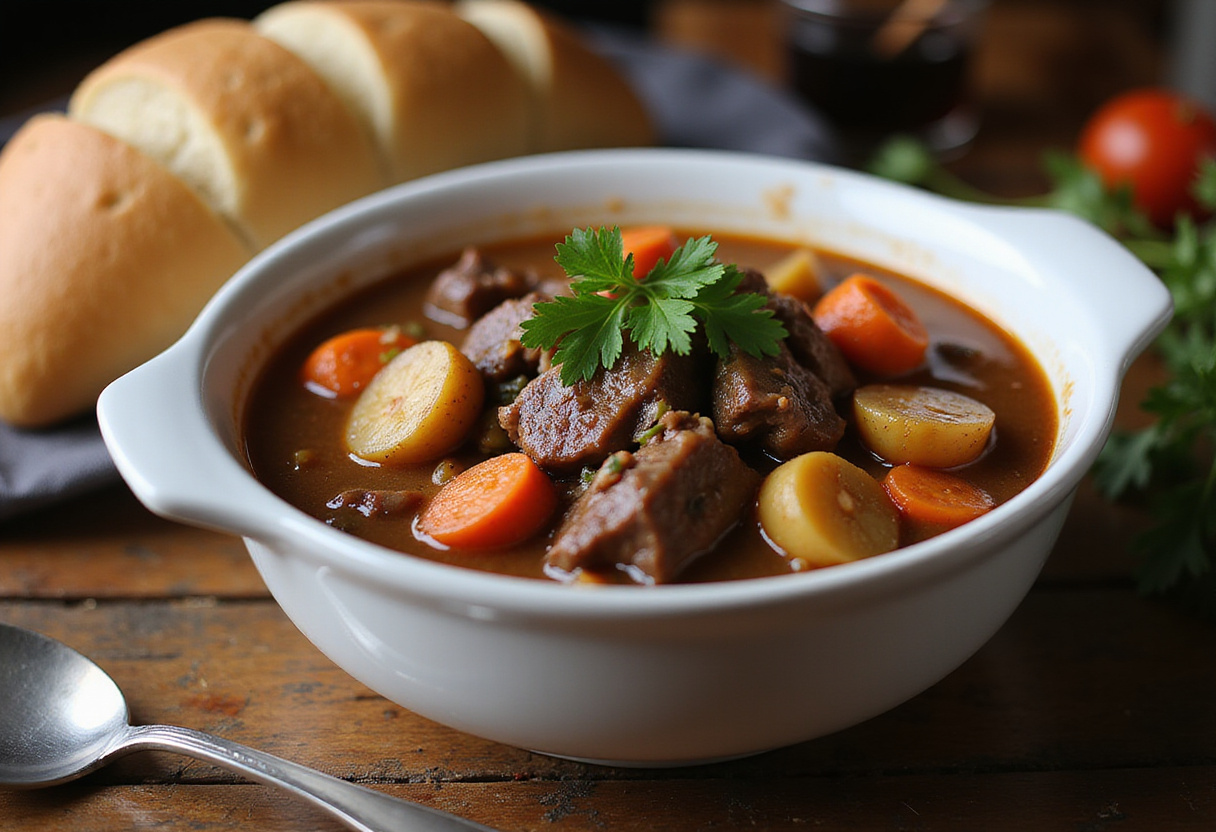Perfect Beef Broth Recipes: Unlock Culinary Excellence 🍲🥩✨
1. Introduction
Beef broth is more than just a liquid; it’s a culinary cornerstone, an essential ingredient for creating deeply rich and flavorful dishes. From the simplest comforting soup to the most complex and hearty stew, or even an exquisite, nuanced sauce, mastering the art of cooking with beef broth elevates your recipes from ordinary to extraordinary. This article will explore the secrets to unlocking the full potential of beef broth. We’ll provide you with essential beef broth cooking tips, inspire you with innovative beef broth recipe ideas, and offer clear, actionable guidance on how to cook with beef broth to achieve perfect, mouthwatering results every single time. Are you ready to take your cooking to the next level?

2. Understanding Beef Broth
Before diving headfirst into creating perfect beef broth recipes, it’s important to take a moment to clarify exactly what we mean by “beef broth.” Simply put, beef broth is a savory and intensely flavorful liquid made by patiently simmering beef bones, various meat scraps, and a medley of aromatic vegetables together in water. This slow simmering process is crucial, as it gently extracts all of the deep flavors and vital nutrients from the ingredients, resulting in an incredibly versatile cooking liquid that forms the backbone of countless dishes. The quality of your beef broth will dramatically impact the final taste of your dish, so opting for a homemade version, or selecting a high-quality, responsibly sourced store-bought option, is absolutely crucial. Don’t skimp on quality here!
3. Key Ingredients for the Best Beef Broth
To make the absolute most of your beef broth and ensure a depth of flavor that’s truly unparalleled, you absolutely must start with the highest quality ingredients that you can find. Selecting meaty beef bones, particularly those with good cartilage content (such as knuckles and shanks – have you checked out these beef shank recipes?), is essential for a rich, gelatinous broth that has body and mouthfeel. Don’t underestimate the power of aromatic vegetables! Adding a generous amount of onions, carrots, and celery will significantly enhance the overall flavor profile of your broth. Finally, a thoughtful selection of herbs and spices, such as bay leaves, dried thyme, and whole peppercorns, will provide further layers of depth and satisfying complexity. Think of it as building a symphony of flavor!
4. Step-by-Step Guide to Making Beef Broth
While high-quality store-bought beef broth is certainly convenient, creating your own homemade beef broth from scratch is a truly rewarding culinary experience that also allows you to have complete control over the flavor and the quality of the ingredients used. Here’s a simple, easy-to-follow guide:
Step 1: Roasting the Bones
Begin by preheating your oven to a moderate temperature of 400°F (200°C). Next, arrange the beef bones and your selection of vegetables on a baking sheet, ensuring that they are spread out in a single layer. Roast them in the preheated oven for approximately 30-40 minutes, or until they develop a beautiful, deep golden-brown color. This roasting step is absolutely essential, as it adds a deeper, richer, and more complex flavor dimension to your finished broth. Don’t skip it!

Step 2: Simmering the Broth
Carefully transfer the roasted beef bones and vegetables from the baking sheet to a large, heavy-bottomed stockpot. Add enough cold, filtered water to completely cover all of the ingredients in the pot. Bring the water to a gentle simmer over medium heat, then immediately reduce the heat to low and maintain a very gentle simmer for a minimum of 4-6 hours. For an even more intense and concentrated flavor, you can simmer the broth for significantly longer – even up to 8 or 10 hours! Throughout the simmering process, be sure to regularly skim off any foam or impurities that rise to the surface of the broth. This step will ensure a clearer, cleaner tasting final product. If you’re planning a flavourful beef stew, maybe you should try making beef shank stew.

Step 3: Straining the Broth
Once the broth has finished simmering for the desired amount of time, carefully strain it through a fine-mesh sieve that has been lined with several layers of cheesecloth. This straining process will remove all of the solids from the broth, leaving you with a clear and flavorful liquid. Discard the solids (bones and vegetables) after straining. Allow the strained broth to cool slightly before proceeding to the next step.
Step 4: Storing the Broth
Carefully transfer the cooled beef broth to airtight containers, leaving a small amount of headspace at the top of each container to allow for expansion during freezing. You can store the beef broth in the refrigerator for up to 5 days. For longer-term storage, the broth can be frozen for several months without any significant loss of flavor or quality. Consider freezing the broth in smaller, individual portions (such as in ice cube trays or small freezer bags) for convenient use in future recipes. This way, you can easily thaw only the amount of broth that you need, without having to thaw a large batch. Have you asked yourself is beef shank good for slow cooking? The answer might surprise you when used with broth!

5. Beef Broth Cooking Tips for Enhanced Flavor
- Roast Ingredients: As mentioned, roasting the bones and vegetables before simmering is absolutely essential for intensifying the depth of flavor in your beef broth. The caramelization that occurs during roasting creates complex and nutty notes that will transform your broth.
- Skim Regularly: Removing the foam and any impurities that rise to the surface of the broth during simmering is crucial for achieving a clearer and cleaner-tasting final product. These impurities can contribute a bitter or cloudy taste if left unchecked.
- Simmer Low and Slow: Maintaining a gentle simmer is the key to successfully extracting the maximum amount of flavor from all of the ingredients in your broth. Avoid boiling the broth vigorously, as this can result in a cloudy and less flavorful product. A low and slow simmer allows the flavors to gently meld and develop over time.
- Season Carefully: It’s best to add salt and pepper (or any other seasonings) towards the very end of the simmering process. This allows you to accurately gauge the final flavor of the broth and avoid the risk of over-salting. Remember that the broth will reduce as it simmers, concentrating the flavors, including the salt.
6. Perfect Beef Broth Recipes: Ideas and Inspiration
One of the most amazing things about beef broth is its incredible versatility in the kitchen. It can be used as a foundational ingredient in a wide variety of dishes, adding depth, richness, and complexity to everything it touches. Here are just a few beef broth recipe ideas to spark your culinary inspiration:
- Beef Stew: Use a rich and flavorful beef broth as the base for a hearty and comforting beef stew. Add tender chunks of beef (perhaps using a beef shoulder roast recipe?), along with potatoes, carrots, and celery for a complete and satisfying meal.
- French Onion Soup: Create a classic and elegant French onion soup by caramelizing sweet onions until they are deeply golden brown, then simmering them in a flavorful beef broth. Top with a crusty baguette slice and a generous helping of melted Gruyère cheese for the ultimate indulgence. This soup depends entirely on good beef broth.
- Risotto: Infuse your risotto with an incredible depth of flavor by using warm beef broth instead of plain water. The beef broth will impart a savory richness to the creamy rice, creating a truly unforgettable dish.
- Gravy: Whip up a savory and delicious gravy to serve with roasts, mashed potatoes, and other comfort food favorites by using beef broth as the foundation. The beef broth will add a rich and meaty flavor to the gravy that is simply irresistible.
- Noodle Soups: Elevate your ordinary noodle soups to new heights by using a robust and flavorful beef broth as the base. Add your favorite vegetables, herbs, and protein (such as shredded beef or chicken) for a complete and satisfying meal.
7. How to Cook with Beef Broth: Techniques and Methods
When cooking with beef broth, keep these techniques in mind in order to maximize its potentially robust flavor:
- Deglazing Pans: After searing meat in a pan, don’t discard those flavorful browned bits (known as “fond”) that are stuck to the bottom! Instead, use beef broth to deglaze the pan. Simply pour a bit of beef broth into the hot pan and use a spatula to scrape up the browned bits. This creates a delicious and intensely flavorful sauce that you can use to drizzle over the meat or incorporate into a larger sauce.
- Braising: Braising is a cooking technique that involves searing meat and then simmering it in liquid (such as beef broth) for an extended period of time. This method is particularly well-suited for tougher cuts of meat, as the slow simmering process tenderizes the meat and infuses it with flavor. Beef broth is an excellent choice for braising, as it adds a rich and savory depth to the dish.
- Simmering Sauces: Use beef broth as the base for simmering your favorite sauces, such as marinara sauce, Bolognese sauce, or a simple pan sauce. The beef broth will add a layer of umami and complexity to the sauce, enhancing its overall flavor. The longer you simmer the sauce, the more the flavors will meld together and intensify.
- Adding Depth to Soups: Incorporate beef broth into your vegetable or bean soups to add a layer of umami and richness that will elevate the dish to a whole new level. Even a small amount of beef broth can make a big difference in the overall flavor of the soup. Looking for keto options? See what are some keto recipes using beef mince.
For even more recipe inspiration, check out this collection of recipes with beef broth from Southern Living!
8. Common Mistakes to Avoid When Using Beef Broth
To ensure that your dishes turn out perfectly every single time, be sure to avoid these common mistakes when using beef broth:
- Using Low-Quality Broth: As we’ve stressed throughout this article, the quality of your beef broth is absolutely crucial to the success of your dish. Avoid using low-quality, mass-produced broths that can taste bland, artificial, or overly salty. Instead, opt for a homemade broth or a high-quality store-bought broth that is made with real ingredients and has a rich, natural flavor.
- Over-Salting: Always taste your dish before adding any salt, as beef broth can already contain a significant amount of sodium. Adding too much salt can ruin the flavor of your dish, so it’s always best to err on the side of caution and add salt gradually, tasting as you go.
- Not Simmering Long Enough: When using beef broth as the base for a sauce, soup, or stew, be sure to allow sufficient simmering time for the flavors to fully develop and meld together. Rushing the simmering process can result in a dish that tastes bland or underdeveloped.
- Ignoring the Fat: Skim off any excess fat from the surface of the broth before using it in your dish. Excess fat can make the dish taste greasy or heavy. You can easily remove the fat by chilling the broth in the refrigerator and then skimming off the solidified fat from the top.
9. Conclusion
Mastering the art of cooking with beef broth opens up a whole new world of culinary possibilities. By following these perfect beef broth recipes, learning and implementing our beef broth cooking tips, and understanding exactly how to use beef broth effectively, you can consistently create dishes that are rich, deeply flavorful, and incredibly satisfying. Whether you’re making a classic beef stew on a cold winter night or experimenting with exciting new recipes, the quality of your beef broth will always shine through as the star of the show. So go ahead, embrace the endless potential of this versatile ingredient, and enjoy the delicious rewards! For more recipes, check out Quicky Recipes. Bon appétit!

